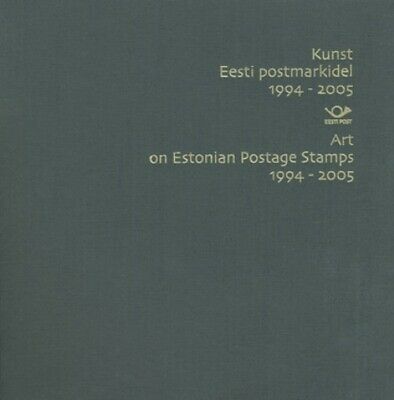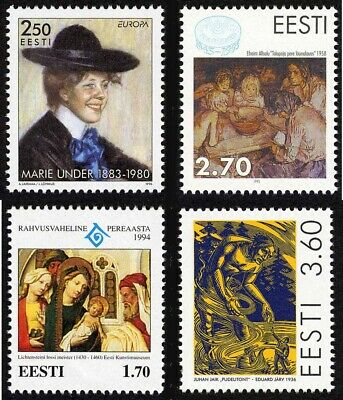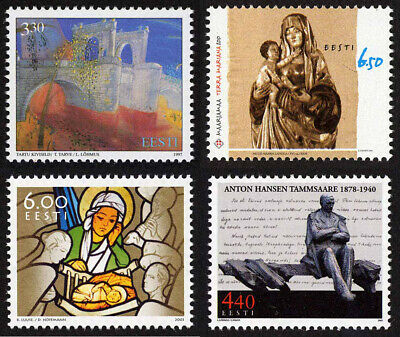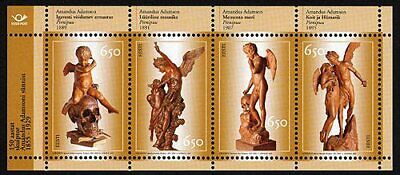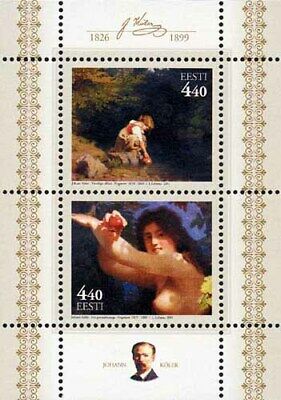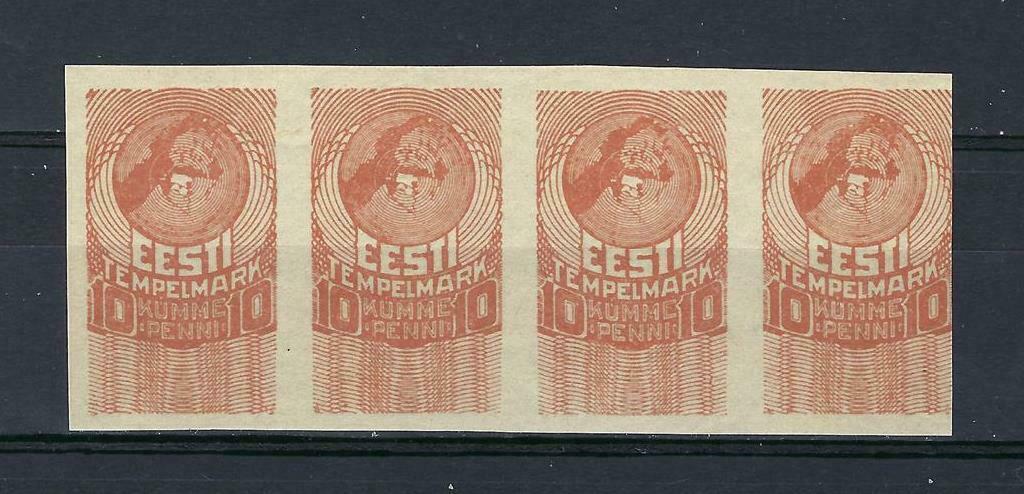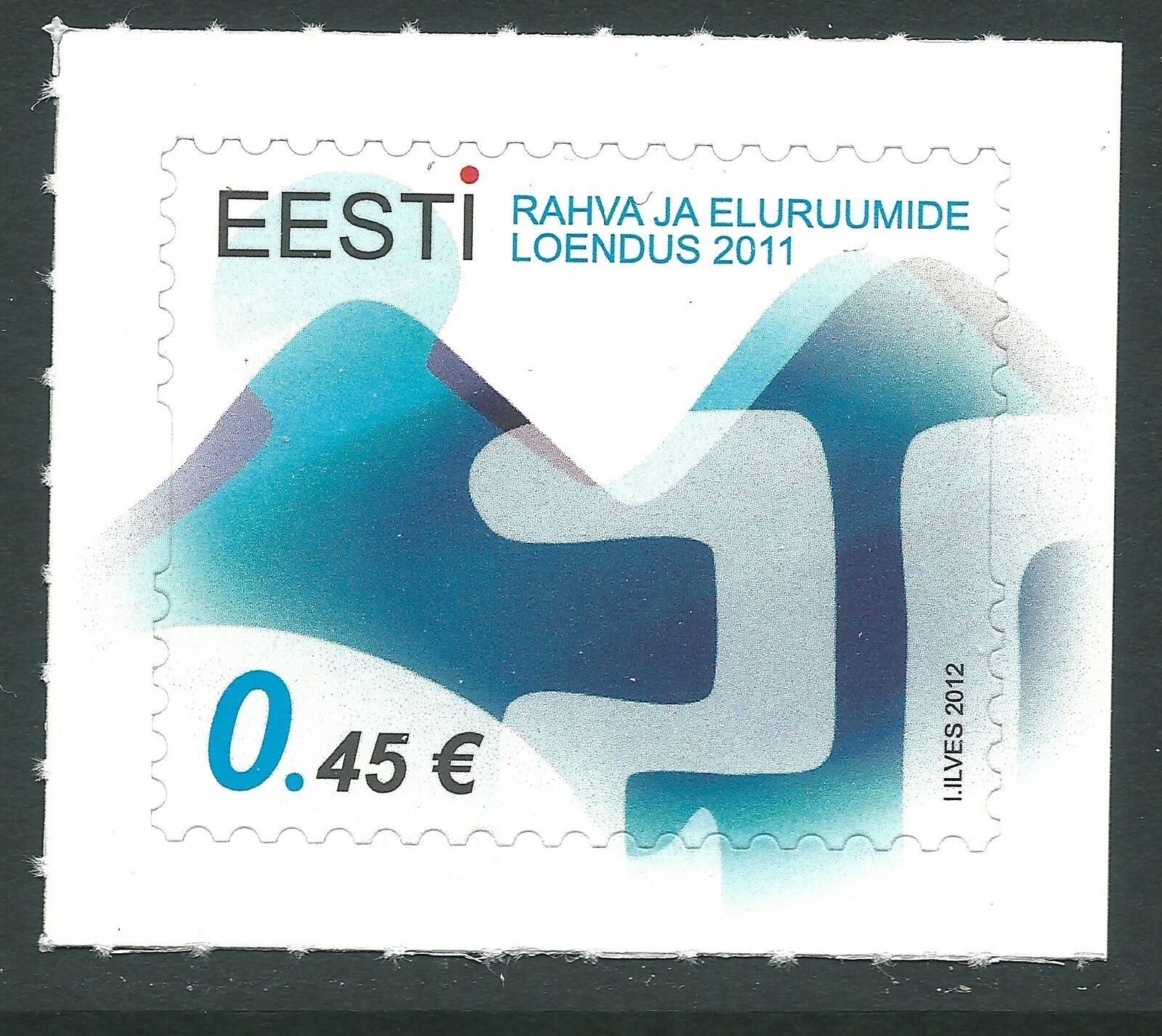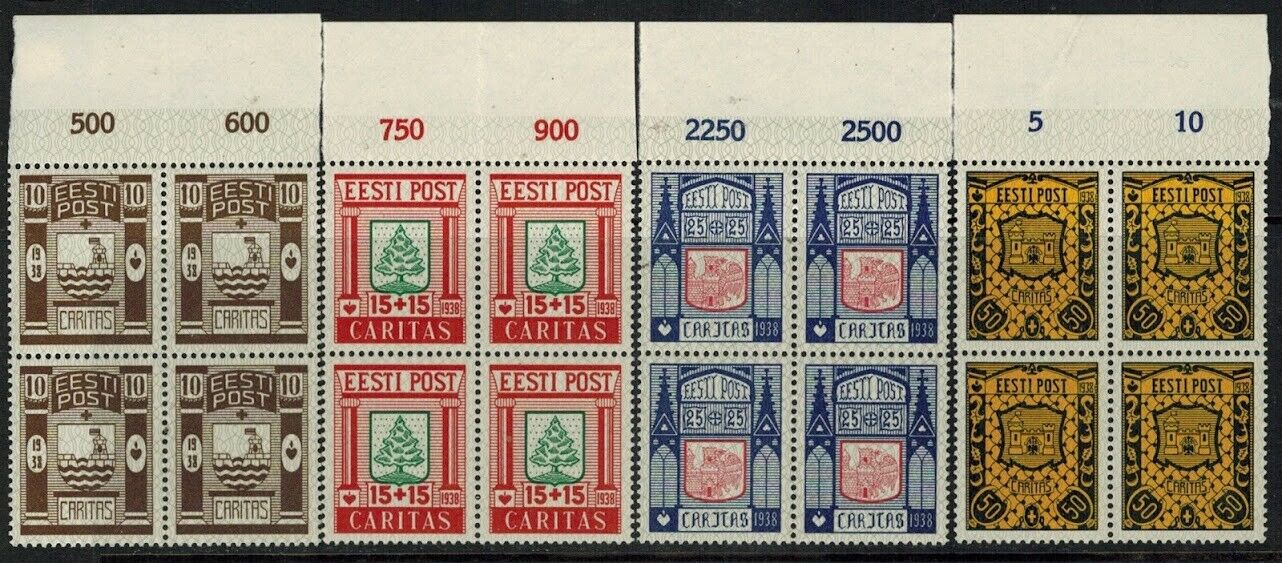-40%
Official stamp album of ESTONIA - Art on Estonian Postage stamps ( 27+15 stamps)
$ 35.11
- Description
- Size Guide
Description
OFFICIAL STAMP ALBUM OF ESTONIA 2005 - Art on Estonian Postage stamps (27+15 stamps)!! EXTRA BONUS !!
From the treasury of the Estonian Art Museum (15 stamps)
2010, 2011, 2012 ,2013, 2014, 2015 , 2016, 2017 2x, 2018 4x, 2019, 2020
A work of art was first featured on an Estonian postage stamp in 1994, but other followed soon. This presentation set has 15 of these stamps.
Shipping and handling:
Registered mail with tracking number - 11.90$
Combined shipping available -
NO extra charge for additional stamps/ FDCs
.
Payment: PayPal.
1994 -
The Infant Jesus Carried Into the Temple (1630-50), by the Master of the Lichtenstein Castle. Estonian Art Museum.
The Infant Jesus Carried Into the Temple (1630-50), by the Master of the Lichtenstein Castle. Estonian Art Museum.
1995
-
The Estonian stamp issued to commemorate the 50th anniversary of the United Nations Food and Agriculture Organization, the world body to fight hunger and poverty, brings the reproduction of a painting, Farm Labourer’s Family at Table (1958), by the Estonian painter Efraim Allsalu (b. 1929), from the collection of the Estonian Art Museum.
1996 -
Marie Under (27 March 1883 – 25 Sept 1980), a star among stars, was the most outstanding poetess of her generation in Estonia. She shocked her contemporaries by the sensuous love lyrics of her first collection in 1917 and influenced generations of followers. She was active in several literary circles with a social critical, but excelled with songs about Beauty, Joie de Vivre and Happiness. To escape Soviet occupation, she sought refuge with her family in Sweden in 1944 and lived in Stockholm until her death, writing heart-felt poems about her country whose rise to new independence she was not to witness. Under’s poetry has been translated into dozens of languages and she was a fruitful poetry translator herself. Internationally the best known Estonian poet, she was short-listed for the Nobel Prize several times. Marie Under’s portrait in the 1996 EUROPA stamps is a 1904 pastel drawing by Ants Laikmaa who urged Under to write in Estonian despite her German-medium education.
1997 -
The Tartu Stone Bridge, a symbol of Tartu even 56 years after its destruction, was one of the most beautiful monuments in the city’s historical centre, a splendid example of Classical architecture to complete the ensemble of its Town Hall Square. Built soon after a big fire in 1775, it was opened for traffic on 16 September 1784. The roadway was 5.6 metres and the pavements on its either side 1.4 metres wide. It had two massive posts with arches over the roadway, and its middle part could be raised to permit the passage of river traffic. The now legendary bridge was destroyed in WWII, during the first few weeks of hostilities in 1941. The stamp reproduces a pastel drawing of the Tartu Stone Bridge by Tiina Tarve.
1998 -
Juhan Jaik, a writer of stories for children and young people, was born on 13 January 1899 and died 10 December 1948 in exile in Stockholm. The best of his stories rely on folk tradition and local history. In them, in a mild humorous vein peculiar to him, Jaik colourfully describes the lives of people, both rich and poor, in southern Estonia in the first half of the 20th century. Books by Juhan Jaik have been illustrated by Eduard Wiiralt, Hando Mugasto, Eduard Järv, and other artists. The postage stamp reproduces an illustration by Eduard Järv to Juhan Jaik's story The Bottle Genie.
1998 -
The outstanding print artist Eduard Viiralt (Wiiralt) was born on 20 March 1898 in the St. Petersburg povince of Russia. He entered an art school in Tallinn in 1915 and then moved on to the Pallas art school in Tartu. Receiving a year's grant to study in Paris 1925, he remained there for most of his life. taking part in international exhibitions since 1930, he displayed his work in paris, Strasbourg, Amsterdam, Johannesburg, Vienna, Tallinn, Tartu, Helsinki and elsewhere. Critics praised his mastery and individual view of the world. After a longer sojorn in Morocco in 1938-39 he returned to Estonia in 1939, but left the ountry for Vienna in 1944, never return to his Soviet-occupied native country. After brief stays in Germany and Sweden he settled in paris in 1946 and died there on 8 January 1954. He lies buried at the Pe're-Lachaise cemetery. The artist left a legacy of nearly 4000 drawings and more than 400 prints. The souvenir sheet reproduces Eduard viiralt's "The Hell", a print completed in 1930-32, from the collection of the Estonian Art Museum.
2000 -
In 1900 Kristjan Raud, an illustrator of the Estonian national epic Kalevipoeg, made a bookplate for his brother Paul Raud, a painter, thus creating the first bookplate by an Estonian artist in Estonia. As a result, the Estonian national bookplate marks its centenary this year. The number of bookplates made by Estonian professional and amateur artists before World War II reached about a thousand, but by today, the figure is close to 40,000. Bookplates, ex libris, have been pictured in postage stamps also before, for example in 1935 in Spain, in 1945 in Brazil and in 1970 in the Soviet Union.
2001 -
In 1201 Bishop Albert of Bremen, on a mission to convert the pagan tribes of Livonia to Christianity, founded a cathedral at the Livonians' port and settlement site on the Daugava River (present-day Riga) and dedicated it, along with all Livonia, to the Virgin Mary. Applying for confirmation of the dedication to the Pope, it was granted by the 4th Lateran Council of 1215 and officially proclaimed by Pope Innocent III. By that act, participation in a crusade or pilgrimage to Livonia was regarded as equal to a trip to the Holy Land. It gave Old Livonia, comprising Estonia, Livonia and Courland, a special meaning for the Western church. The name of St. Mary's Land (Maarjamaa, Terra Mariana) is still used as a synonym of Estonia in poetic or religious contexts. Riga, the Latvian capital, is marking its 800th anniversary this year. The stamp features an early 16th figure of the Virgin with Child in wood, originally from the altarpiece of Estonia's Lääne-Nigula Church, but now kept in the Niguliste church in Tallinn.
2001 -
Johann Köler (1826-1899), the son of peasant parents, graduated from the St Petersburg Academy of Arts in 1855 to become a founder of an Estonian national school of painting. In 1857 he travelled through a number of European countries and in 1858 went to Rome where he stayed several years, painting vivid landscapes, scenes of Italian life and portraits. Elected Academician by the St Petersburg Academy of Arts in 1861, he settled in St Petersburg and worked as an art teacher, including in the Tsar's family as well as the Academy of Arts, and gradually won recognition as a painter of expressive portraits of prominent people. Köler's artistic prime coincided with the peak of the Estonian national movement in the 1860s and he took advantage of his position in the Russian capital to promote the cause of his people. Some of his best pictures depict the life of Estonian peasants. Reproduced in the souvenir sheet are two of his best pictures: Girl on the Spring (1858-62), and Eve of the Pomegranate (1879-80, fragment).
2002 -
The painter and applied artist Adamson-Eric (18 Aug 1902-2 Dec 1968) was an outstanding Estonian cultural figure and creative personality. The aesthetic principles of his art were formed during studies at art schools and private academies in Berlin and Paris in the 1920s, and he emerged as a painter with an idiosyncratic style and an Impressionist touch in the 1930s in Tallinn. Although first and foremost a versatile painter - of portraits, landscapes, nudes, etc, Adamson-Eric was also a fruitful applied artist, practising nearly all branches of the sphere, working in leather, metal, china, textile and pottery. His applied art pieces, in a style close to Art Deco, are characterised by elegance, refined colours and a brilliant esprit, but are still usable objects. Based on the French painting tradition, Adamson-Eric's work is closely connected also with the local Nordic environment and the traditions of Estonian national art. An Adamson-Eric Museum featuring hundreds of works by the prolific artist was opened in Tallinn in 1984.
2003 -
The stamp pictures a fragment of a stained-glass window, Holy Night, by Dolores Hoffmann of 1996. Decorating the 13th-19th century Türi church, it features the birth of Christ.
2003 -
A.H. Tammsaare (actually Anton Hansen, 30 Jan 1878–1 March 1940) is one of the greatest prose-writers in the history of Estonian literature. He achieved artistic mastery in the drama Judith (1921), which offers a novel interpretation of a Biblical story, and the poetic conflict novel The Master of Kõrboja Farm (1922). His main work, the five-volume Truth and Justice (1926–33), one of the greatest psychological development novels of the 20th century, creates monumental characters and paints an extensive picture of Estonian life from the late 19th to the first decades of the 20th century. The stamp features a monument to A. H. Tammsaare (by sculptor Jaak Soans and architect Rein Luup) in Tammsaare Park in central Tallinn, opened on the author's birth centenary in 1978.
2003 -
Friedrich Reinhold Kreutzwald, born on the Jõepere estate near Kadrina in northern Estonia, studied at the Tallinn County School, worked as elementary school teacher and private tutor and then entered the Medical Faculty of Tartu Unversity to become the town physician in Võru upon its graduation. But for the Estonians’ Kreutzwald is known first and foremost as the author of the Estonian national epic Kalevipoeg (1857–61), Old Estonian Fairy-Tales (1866), The Land of Fools (1857), The Scourge of Drink (1840) and many other works of educational or patriotic content. Kreutzwald was an prolific contributor to the Proceedings of the Estonian Learned Society (est. 1838), he enhanced the means of expression of Estonian as a literary language and his work paved the way to the development of national literature and the whole of Estonian culture, as well as the national movement. Kreutzwald was corresponding member of the Finnish Literary Society (1855) and foreign member of the Hungarian Academy of Sciences (1871). The Viru Bard, as he was often called, died on 25 August 1882 in Tartu. The souvernir sheet consists of two stamps: the stamp on the left features a fragment of a Kreutzwald's portrait by Karl Tael (1952, copper engraving), and the one on the right a fragment of an illustration “Voyage to the End of the World”, by Kristjan Raud to the national epic Kalevipoeg. In addition to the dates of Kreutzwald's birth and death, the souvenir sheet reproduces the oak from the poet's birthplace and the main building of Tartu University.
2005 -
In the stamp reproduces an unknown 15th century artist’s woodcut of the Magi from the print collection of the Tartu University Library.
2005
-
Amandus Adamson, one of the most prominent Estonian sculptors, was born on 12 November 1855 near Paldiski. After studying sculpture at the St Petersburg Academy of Fine Arts he lived and worked in Russia, France and Italy and since 1918 in Paldiski, Estonia. He was elected academician of the St Petersburg Academy of Fine Arts in 1907. His work includes compositions connected with the sea – Pakri Island Sealer (1898), Anxious Waiting (1899), mythological and allegorical pieces (Dawn and Dusk, 1895, Eternally Victorious Love, 1899, The Ship’s Last Sigh, 1899), and several well-known monuments such as the Rusalka Memorial in Tallinn (1902), the Memorial to Sunken Ships in Sevastopol (1904), monuments to the poet Friedrich Reinhold Kreutzwald in Võru (1926), to the poetess Lydia Koidula in Pärnu (1929), etc. Amandus Adamson died on 26 July 1929 in Paldiski. The souvenir sheet features four wooden sculptures by Amandus Adamson from the Estonian Art Museum collection; the FDC has a fragment of the Rusalka Memorial.
-----------------------------------------------------------------------------------------------------------------
2010 -
Starting from this year Estonian Post in cooperation with the Estonian Art Museum will launch a series of stamps devoted to Estonian art, From the Treasury of the Estonian Art Museum. In the future one stamp of the series will be issued on every 17th November. The author of the painting Lennuk (1910, actually a sketch for a major mural) is Nikolai Triik, who was enthusiastic about military campaigns and the romantic life of the Vikings while working at the sketch. Reading the epic poem Kalevipoeg and its Song XII, Voyage to the End of the World, with the eye of a symbolist, the artist intensified the mystic subject-matter by simplified form and contrast of bright colours. The red sail of the silver ship is a symbol of sunlight. The arch of the rainbow above it is repeated as a glow above the island of the Lapp wizard, Varrak, on the left and above the demons’ Island of Sparks on the right. The Art Nouveau tempera painting of three parts is associated with the work of Gerhard Munthe, Akseli Gallén-Kallela and Nikolai Roerich, National Romantic painters of the turn of the 19th and 20th centuries, who served as examples for Triik.
2011 -
The paintings of Henn-Olavi Roode (4 Nov 1924 – 25 Dec 1974) constitute the most extensive attempt to interpret and develop post-war modernism in the constrained circumstances of the period. Roode did not limit himself to one sphere alone, and his searches in painting were expressed in city, interior and marine views. In the mid-1960s he took up abstractionism while also experimenting with portraits in different interpretations. In 1962 he painted his famous Market, which has been called the artist's manifesto. Roode's most important canvases were large compositions with numerous figures; they are the most serious works concerning the relations of figures, movement and space in the Estonian painting of the 1960s.
2012
-
Lepo Mikko (1911–1978), a graduate of the Pallas Art School in 1939, was a confirmed modernist whose vigorous creative stimulus was the atmosphere of spiritual liberation and change of the 1950s and 60s. In those years Mikko painted a number of poetic treatments of country life in the process of renewal, as well as painting landscapes. His most radical artistic searches took form in still lifes, one of the most outstanding examples being Still Life with Mandolin, painted in 1958. In that work, as well as in his other analogous works, the basis is the composition of objects that Mikko set up, in which proportions of form, rhythms of contours and decorative relations between patches of colour, rather than materiality and spaciousness, are of primary importance. One of the most fascinating features in Mikko’s works is the perfectly balanced relationship between abstraction and genuine impression.
2013
-
Elmar Kits (1913–1972) graduated from the Pallas Higher Art School in 1939 and he was considered the future hope of Estonian art. The artist’s vigorous talent made him, although in changed circumstances, one of the most significant creators of post-war art. Elmar Kits was born and lived all his life in Tartu. He was an influential leading figure of the art city with traditions and was capable of working in several styles, both in a soft lyrical world of impressions as well as considering canons of realistic treatment. His attempts with cubist deformation became of great importance – they belong among the peaks of the Estonian post-war modernism. Elmar Kits’s painting, After Dinner (1944), is the scene of a summer afternoon delicately painted in light hues. Only the tower of St John’s that lacks its steeple refers to the war and destruction in Tartu. Despite a very traditional scene the picture embraces a very large number of hints, including the importance of pre-war culture and the tense situation of a frontline city.
2014 -
The work of the painter Herbert Lukk (1892-1919) is not very numerous, but it speaks to us about an exceptional and bold artist who has made a major contribution to colour. Episodes from his short life are his beginning of art studies at Ants Laikmaa’s studio and his self-improvement in Helsinki where Lukk, similar to Konrad Mägi, apparently discovered the opportunity of experiencing Alfred William Finch’s colour dot world. Mosaic works looking for the gay colours of Tallinn yards of 1918, its fences and roofs, made people speak about Lukk as a progressive force which remained among the summits of his creative work. Senior sergeant Lukk fell at the age of 27 in the second year of the Estonian War of Liberation.
2015
-
Karl Pärsimägi (May 11, 1902 Võrumaa – July 27, 1942 Oświêcim concentration camp), was an Estonian painter. At the age of 17 he entered the Pallas art school. Initially he studied under the supervision of Konrad Mägi, then Nikolai Triik and later Ado Vabbe. In spring 1923 and summer he made a study trip to Germany under the guidance of Anton Starkopf, In 1937 Pärsimägi went to Paris. Despite economic difficulties the artist worked strenuously and presented his first summary at the Tallinn Art House at the so-called six artists’ exhibition in 1939. Despite attempts to return to his native country the artist remained in the way of events of 1941. After the occupation of France, he was put in the Drancy concentration camp and from there on to Oświêcim, where he died in 1942. The stamp dedicated to Karl Pärsimägi has his oil painting “A Girl and the Moon” depicted on it.
2016 -
Valve Janov (1921-2003) who in the second half of the 1940s belonged to the progressive-minded young artists studying at the Tartu State Art Institute was one of the first in Estonia who dared to experiment with abstract art. She made her first abstract works as early as in 1958. When the authorities closed down the exhibition in 1960, Janov's favourite motive became the turbot whose patterned back made it possible for the artist to continue dedicating to shimmering colour and form. "Fish above Karlova" (1960) is Janov's most fascinating work in which the artist has a view of Karlova and has added to it a dreamy collage fish in the collage technique. It was in that part of Tartu where most of the circle of friends lived and worked there and often their experimental works have been also called Karlova vanguard.
2017 -
The Estonian artist Konrad Mägi (1878–1925) was one of the first modernist painters of northern and eastern Europe. His art is characterised by powerful colours, and he synthesised the major art trends of the time into a unique whole, adding his personal sensitivity to nature. The first comprehensive exhibition of Konrad Mägi’s works held outside Estonia takes place in Italy, through the cooperative effort of the Art Museum of Estonia, the Galleria Nazionale d’Arte Moderna e Contemporanea and the Estonian Embassy in Rome. The event is dedicated to the Estonian Presidency of the Council of the European Union and to the 100th birthday of the Republic of Estonia.
2017 -
Born in Hiiumaa, Ülo Sooster (1924–1970), whose fate led him to study in Tartu, where he was arrested and sent to Soviet forced labour camp, after which he became one of the central figures in Moscow’s underground art scene, always depicted juniper, fish, and egg as the main motifs of his art. These archetypal motifs of the island’s nature allowed Sooster to delve into the secrets of two-dimensional depiction and the search for the beginning of the universe. Although forest has often been portrayed in Estonian art, Juniper forest (1962) is not quite a traditional nature motif. In this almost symmetrical composition, the forest of junipers becomes a mysterious symbol of the artist’s spirituality. According to Sooster’s good friend Ilja Kabakov, the entire creation of Ülo has mythological roots, and even if the artist wanted to draw the most simple thing, he still ended up creating a cosmic mechanism.
2018 -
JOHANN KÖLER (1826–1899) was the first Estonian painter to acquire an academic education in art. He founded the Estonian portrait and landscape painting, and partially the Estonian genre painting as well. Köler was awarded a small gold medal upon graduation from the St. Petersburg Academy of Arts. He was part of the rise of the Estonian national awakening by acting as an intermediary between the Estonian nationals and the Russian authorities.
KONRAD MÄGI (1878–1925) was one of the most colour-sensitive Estonian painters of the first decades of the 20th century and he developed his style by moderate interpretation of aspects of modern art. Even though his creative career lasted a mere 20 years, Mägi had significant influence on the art of his time and that of the future. In addition to his home country, a great deal of Konrad Mägi’s works have been created while travelling in countries like Finland, Denmark, Norway, France, Italy and Germany.
The creations of KARIN LUTS (1904–1993) are among the most fascinating and intriguing of Estonian art in the 1920s–1930s. In 1944, Luts escaped to Sweden, where she devoted herself fully to art. During the mid-1950s, Luts found a new challenge in graphics, which brought her more attention and international recognition.
FELIX RANDEL’S (1901–1977) cubist paintings are grandiose, have strong generalized form and get their integrity from skilled composition. Randel’s daring and bright colouring is focused on the rhythms of red shades. His works have been displayed at exhibitions since the 1924. Caricatures from the end of 1950s are considered to be the finest works of Randel from the post-war period.
2019 -
The painting, which was completed around 1630 in Pieter Brueghel the Younger’s studio,
The
Procession of the Bride
, was originally part of a series of 5-6 paintings. The series depicted the sending of the bride to church, the bridegroom’s entourage arriving at the church, presentation of gifts, the wedding celebration, and the consecration of the matrimonial bed and then finally everyday married life. The iconography in the series is based on historical peasant satirical tradition that can be traced back to the rapid urbanization that took place in the 15
th
century in the Low Countries.
2020 -
The piece titled “River Seine” (1924) is a depiction of the soul and essence of Paris in the 1920s by one of Estonia’s most famous avant garde artists, Ado Vabbe (1892-1961). Feeling the urban environment in a futuristic key, Vabbe captured the changing atmosphere and continuous life rhythm of a metropolis using a fragmented colour surface. Such an approach could be considered rather novel for Estonian art at the time. Thus, as he kept up with artistic innovators in Europe, Vabbe could be considered the first modernist artist in the Estonian context.
